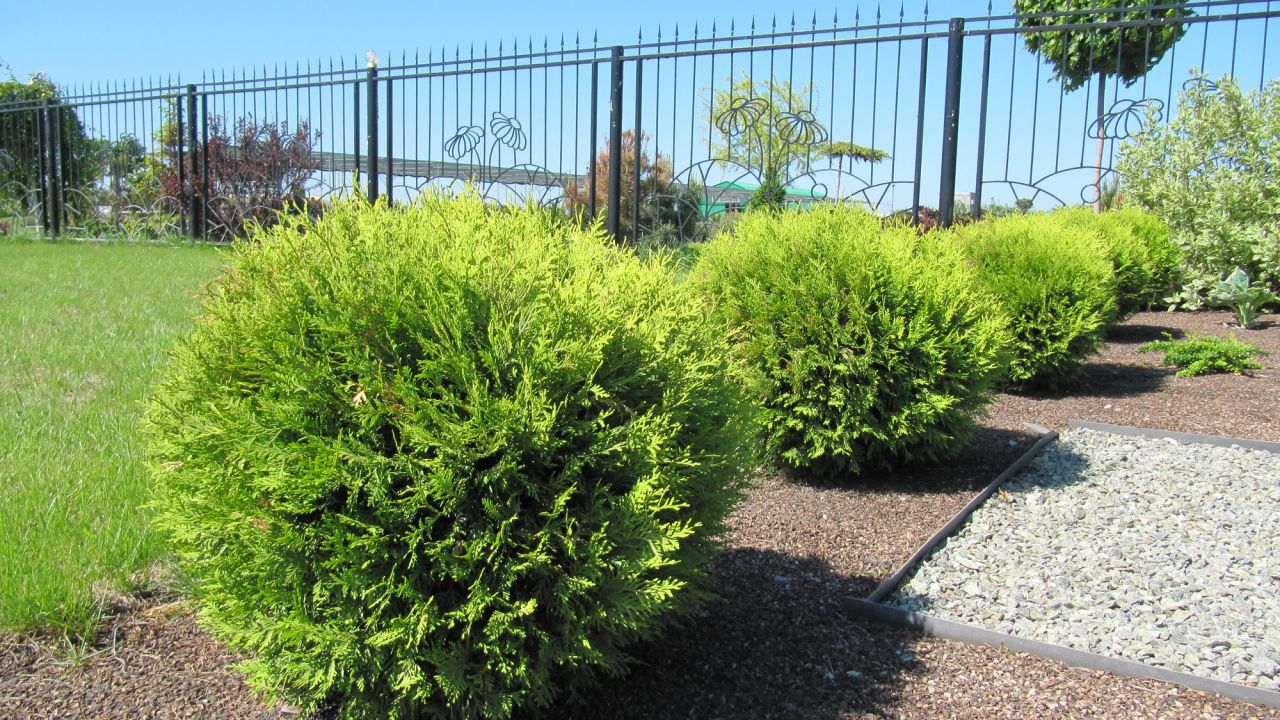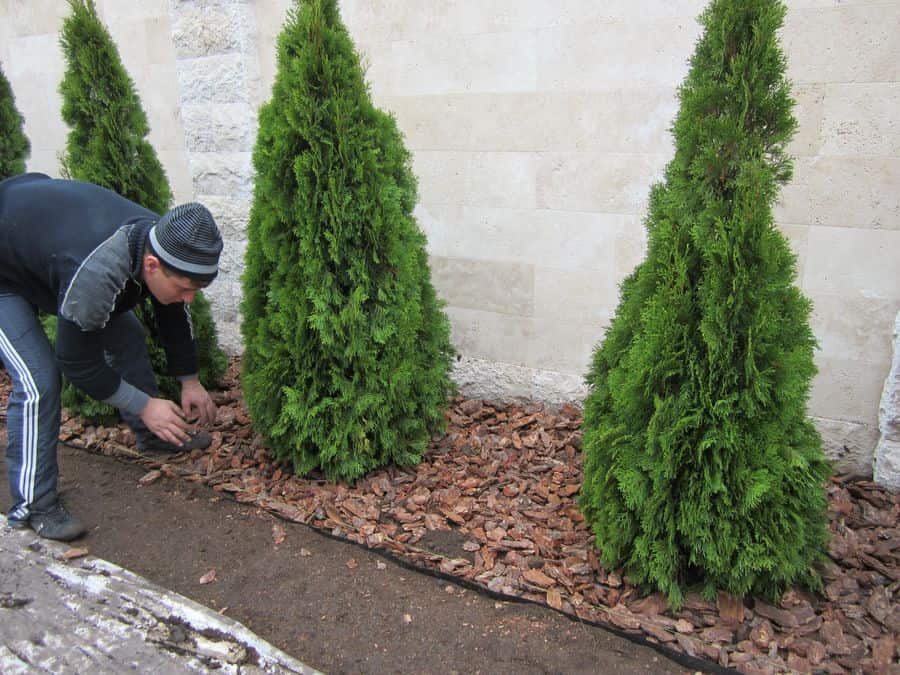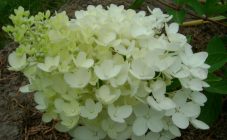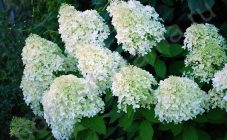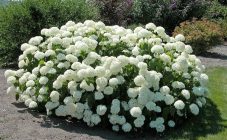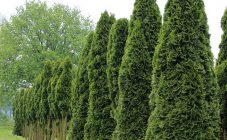Content:
Evergreen shrubs can be a real decoration of the site. Thuja is planted both separately and as part of a hedge. Especially popular are varieties with a spherical crown, for example, Golden Globe and Thuja Globoza. They are undemanding to care and look quite impressive.
A quick reference about culture
Thuja Globoza is one of the varieties of evergreen coniferous shrub that is actively used in landscape design. This variety became widespread in Russia due to its unpretentiousness and long life span. This variety is also sometimes called western thuja. Since the plant easily adapts to even the most polluted air, Globoza is often used in landscape design in large industrial cities. The shrub takes root well on any soil and is absolutely undemanding to its chemical composition.
The plant has a spherical crown that is easy to cut, so even a novice landscape designer can easily cope with its formation. Tuyu Globoza can often be found:
- in parks and squares;
- at the entrance to schools and kindergartens;
- in forested areas near hospitals and clinics;
- at the entrance to cafes and restaurants.
In summer cottages, this plant is usually grown where there is an oriental-style garden or a classic alpine slide. Experts unanimously claim that this variety of thuja is one of the most spectacular representatives of the Cypress family.
Description of the variety
This plant was first used in landscape design in the 1870s. This shrub came to Russia from Western Europe, hence the second name of the variety - the western thuja Globosa. You can recognize this shrub by several characteristics. Description of Tui Globoza:
- height of an adult plant (at the age of 25 years) - up to 2 m;
- the color of the needles is light green in the warm season, light brown in winter and autumn;
- pronounced spherical crown shape;
- flat shoots upward;
- the color of the cones is light brown;
- the shape of the cones is slightly elongated;
- the length of the cones is up to 1 cm.
One of the significant disadvantages of this variety is its slow growth. Thuja Globosa grows only 3-5 cm per year. This is a kind of compact version of an evergreen shrub. Also, over time, the crown acquires a loose and unkempt appearance, therefore, every 2-3 years it is necessary to prune in order to form the crown.
Landing
For planting, it is best to choose a half-shaded area. The main thing is that the plant has reliable protection from the wind, since drafts have a bad effect on the growth and development of thuja. The shrub will grow well in wet or loamy soil, but you should not plant thuja in swampy areas. In regions with snowy winters (for example, in the Middle Lane), globose thuja does not require shelter, because it winters well under the snow.
The plant is planted with seedlings purchased from the nursery and packed in special plastic containers. After buying a seedling you need:
- how to moisten a clod of earth;
- prepare a pit for planting;
- pour a drainage layer on the bottom of such a size that it completely covers the bottom;
- place a mixture of turf, peat and sand in the pit;
- add 400 g of nitroammofosk complex fertilizer to the nutrient mixture;
- carefully remove the seedling from the container, without damaging the root system, and place it in the pit;
- cover with earth, mulch.
Care
This shrub is quite unpretentious. However, Thuja Globoza needs to be looked after, otherwise the plant will quickly become ugly, and its life expectancy will be noticeably reduced. Here are the basic rules for caring for this variety:
- Water the plant at least 2-3 times a week. Not only the ground at the roots of the thuja needs moisture, but also the needles themselves. The earth is watered from a garden watering can, and the needles are sprayed from a hose. Just do not make a large pressure of water, so as not to break the thin needles.
- It is not necessary to apply complex fertilizers for industrial production, since thuja is undemanding to the chemical composition of the earth. However, the slow growth of the shrub will noticeably accelerate if you use organic fertilizers as top dressing - diluted liquid mullein, compost and humus, peat, powdered eggshells.
- Crown formation should be carried out periodically. It is formed in thuja by trimming. For this procedure, the gardener will need a sharpened pruner and protective gloves. The crown is formed in such a way that the original shape of the ball is not lost.
- Loosening and mulching should be done very carefully so as not to hurt the root system. During these procedures, care must be taken that the roots of the plant are not exposed.
If thuja is properly cared for, it will live a long time and retain its picturesque appearance for a long time.
Diseases and pests
Evergreen coniferous shrubs, including thuja, have strong immunity to diseases and pests. However, if the plant is improperly taken care of and does not follow agricultural techniques, such serious problems may arise as:
- Late blight. The shoots soften and darken, a pronounced putrid smell begins to emanate from them.
- Fungal infections caused by various molds appear when the soil is too wet. They are dangerous in that the shoots affected by the fungus die off rapidly.
- Invasion of the false scale. This insect infects the bark, yellowish bumps appear on it, which quickly increase. The bark gradually collapses and deforms.
- Rust. The needles begin to darken, change their color from green to brown, then turn brown, in severe cases black and begin to fall off.
Use in landscape design
In landscape design, this plant looks especially picturesque in a group composition consisting of coniferous and deciduous trees, as well as in all kinds of hedges. Thuja western Globoza will look good next to conifers or deciduous plants, which also have a spherical crown. And, on the contrary, the shrub will look ridiculous and lose its showiness in combination with plants that have an elongated crown shape.
Also, small specimens of this plant, like a ficus or a Chinese rose, can be grown in large flowerpots on terraces, loggias or balconies. In Western Europe, in small private houses, you can see the Globoza thuja in a large pot even on the roof.The main thing is that the flowerpot has sufficient stability.
Thuja Globoza is a shrub that can decorate any garden plot. But in order for the plant to have a neat and well-groomed appearance, it needs to be paid a lot of attention. This variety of thuja will grow well throughout Russia due to its resistance to temperature extremes.

